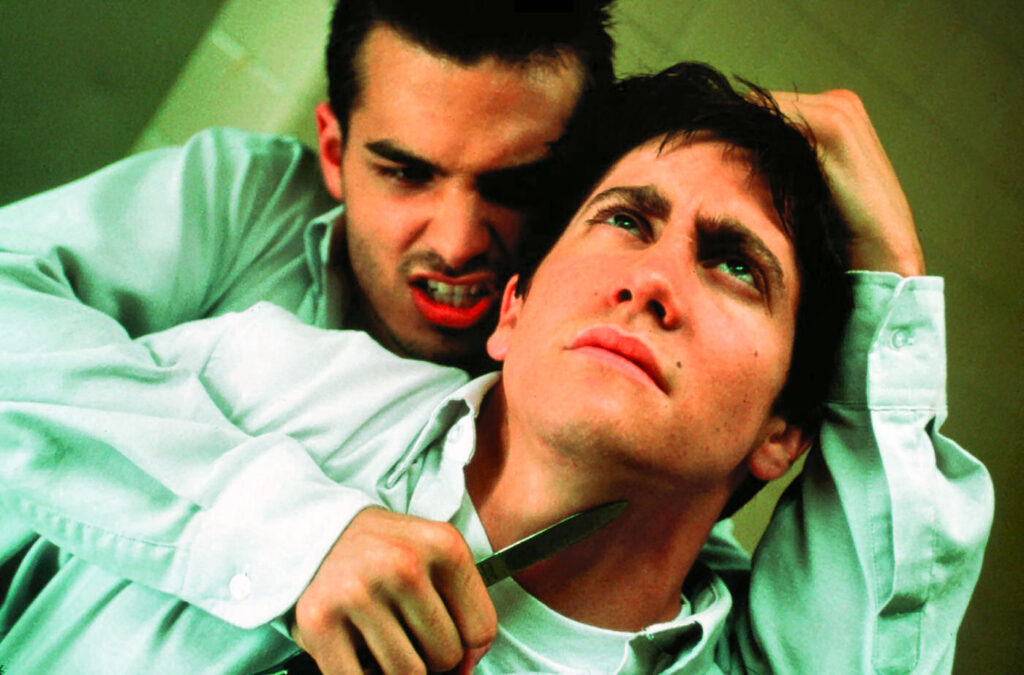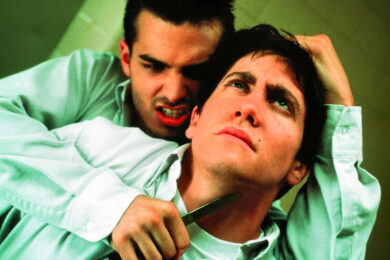There’s a certain amount of anticipation surrounding Noah Baumbach’s Greenberg, as his previous The Squid And The Whale achieved some critical success as an affectingly sentimental and humorous indie gem. But it also sees megastar Ben Stiller (who directed and starred in 1994’s Reality Bites) returning to his indie roots.
Though just about any cinematic tradition can be traced back to a bored Neanderthal waving at his shadow, the indie ripple of which Greenberg is a part derives from the early 90s wave of US independent cinema. Filmmakers like Kevin Smith, Jim Jarmusch and Richard Linklater created weird and colourful films characterised by the witty and flowing dialogue of eccentrics lost in a world where very little happened – except in the heads of the characters. Twenty-odd years on, the indie-formula’s been tried, tested, scrubbed, cleaned and towelled down: the result is Greenberg. Just like in the musicworld, the term “indie” has become to represent something stylistic rather than refer to its method of production and distribution. But in music terms, Greenberg isn’t an indie film, it’s shmindie. It’s Razorlight. Its derivative, formulaic themes ape those of some really great and inspiring films.
Roger Greenberg (Stiller) arrives in LA to watch over his brother’s house whilst he’s on holiday in Vietnam with his family. Having grown up in LA, Greenberg goes about meeting up with past friends and flames, making new ones and generally meandering about, coming to realisations about life.
Inspired by the release of Greenberg, The Quietus have put together a guide for budding writers and filmmakers on how to make your very own indie film: the coveted Essential Guide To Writing An Indie Flick, Winning An Award At Sundance, And Feeling The Cool Vibes Flow Through Your Veins.
1. Mental Illness is Edgy
Give your lead character a vague mental illness of sorts. This instantly makes him (it’s usually a him – see below) edgy – creating the sense of levels of depth without requiring any involving or penetrating dialogue.
You could go for the slightly sombre pill popping of Thumbsucker and Zack Braff’s Garden State, or the brooding yet cuddly delusions of Donnie Darko and Lars of Lars And The Real Girl. If your budget can handle it, there’s the ‘undiagnosed yet clearly unstable’ trope: brilliantly realised by Jim Carey in Eternal Sunshine Of the Spotless Mind, and Adam Sandler, who surprised the world with an extremely convincing bullied younger brother in Punch Drunk Love.
Roger Greenberg emerges on the scene fresh from the nut house. Bosh! Watch out for this guy. Added bonus: have him shuffling around awkwardly like an adolescent boy poorly disguising a hard-on; this camouflage will make your character appear mysterious.
2. The Quirky Chick
Your main man is down on his luck, life’s going nowhere, he mopes and shuffles round the cafes, bars and streets, shrugging in shop windows, with only his floppy hair as company. Enter the quirky chick to paint giant rainbows of sugar candy over his dark skies and help him reach realisations about himself and relationships. The weird thing is, the girl has to do very little to be considered quirky; usually a simple artistic leaning is enough. We’re after the first half of Betty Blue, before her issues really develop. Think a rabbit in sunglasses; slightly unexpected yet entirely unthreatening. Claire Danes in Steve Martin’s near unwatchable Shop Girl takes photos of herself naked; Natalie Portman in Garden State has her little ceremonies; Kate Winslet in Eternal Sunshine dyes her hair; Florence in Greenberg sings in a folk duet and wears big bras. Easy.
3. Awkward Sex
If anyone gets their freak on, especially if it’s your main character, it’s got to be messy, socially awkward, and end in disappointment or embarrassment. This isn’t Top Gun where good-looking people frolic atop silk sheets pleasuring each other with deft, sensuous touches. This has to be the polar opposite. With every shot your indie film has to scream: “I am not like those big budget films,” despite its big budget. Quirky people have weird sex – and indie’s all about the quirks: Secretary for the kinky, The Wackness for the inadequate, Sideways for the fear, Ghost World for the creepy and Happiness for the plain wrong.
Bad sex also enables you to show how neurotic, introspective and “real” your characters are. When Roger Greenberg dives in, he doesn’t shit about. Without warning, his ‘head in the crotch’ move, involving said quirky girl, happens after only the briefest of meetings and ends with social awkwardness when she starts jibbering on about cars. Cars aren’t sexy.
4. Mumbling in Cafés
Since the bearded guy in Linklater’s Slacker smokes and serves coffee to the philosophy bores, and Jim Jarmusch reduced – in sparse moments of genius – his quietening chat-shtick to meandering café based dialogue in Coffee And Cigarettes, mumbling in cafés has become the essence of cool. Carrie and Samantha chat in cocktail bars, cops and ex-servicemen have man-to-mans in sports bars, but cool cats hang ten in cafes.
5. Fall Out With Parents
Only narcs and jocks have a good relationship with their parents. That’s an indie-filmland fact. Parents represent ‘the man’ – your character’s ideals and worldview should be diametrically opposed to this matriarch/patriarch tag-team. They are Vader to your protagonist’s Luke Skywalker. If the parents make an appearance at all, meetings should be awkward (Everybody’s Fine), uncomfortable (Garden State), fraught with resentment (The Squid And The Whale), angered frustration (About Schmidt) or involve some good old honest stroppy teenage rebellion (Thirteen, American Beauty). Of course they needn’t appear at all. Roger Greenberg didn’t attend his mother’s funeral. We don’t know why. Apparently they didn’t get on.
6. Drugs Freak Out
Everyone knows that drugs are cool, possibly even cooler than smoking, and therefore their use and misuse belongs in your indie flick. Pop a pill, smoke something green and kick out with some mood altering ‘lets go crazy’ antics. Kids experiment with it (Thirteen), and forty-somethings drone on about how much they used to do with the forced hipness of an outsider desperately trying to prove they’re cool enough for the party (Juno, The Wackness, Greenberg).
7. Cool Bands Mix Tape
If your character likes cool bands then he is automatically cool – and this is the greatest value to which your film should aspire. OK, it’s only cool by proxy, but that’s enough when you’re painting archetypes. The young gain an air of adult wisdom tinged with the sorrowful hue of one that sits at home by themselves listening to music instead of being socially engaging (you could probably throw Nick And Norah’s Infinite Playlist on that pile). As in Nick And Norah…, the playlist is used as a kind of hidden dialogue for the character to exclaim: ‘this is the sound my heart makes’. That old guy in Juno tragically bangs on about the ’80s New York scene, Steve Buscemi manages to seduce a young lady with his vinyl prowess in Ghost World and Roger Greenberg came close to soiling Galaxy 500 in the way that TV adverts permanently ruin hits from yesteryear on a regular basis, by replacing lines in the chorus with their branding – “does you does or does you don’t take Access,” etc.
8. Big Emotional Row
No matter how reserved, quiet or shy your protagonist, there must be one scene where they lose the plot and shout, scream and generally make a big noise about something. Preferably about four fifths of the way in – this is to avoid the lull the audience may experience given the one-dimensional dullness of your character. If the protagonist shouts a lot, their edginess is reinstated: for we fear once again what they may be capable of and the audience jerk awake.
9. Self-Indulgent Answer Phone Message
All us squares just leave short messages that say something nerdy like “the man’s coming to fix the fridge tomorrow, have you seen my copy of Showgirls?” Your indie flickster leaves rambling messages that result in them revealing their innermost feelings and reaching realisations. The power of self-revelations possessed by a curly piece of plastic is quite phenomenal. Check out Punch Drunk Love for tips on sharing your thoughts on a sex line, and The Wackness where in the same message he reveals his undying love, then proclaims she’s a bitch, then ends with the toe curling line “Peace out, forever!” Greenberg sits on his bed drunk and high. He picks up the phone to call Florence. He rambles about nothing like a school boy for near half an hour, revealing more about his love and dreams to the curly plastic pipe than anyone he’s ever known. Why can’t you talk to real people like this? Why do you struggle? Damn you society, damn you!
10. Nothing Happens
What the hell were Lost In Translation, American Beauty, Clerks, Garden State, Welcome to the Dollhouse, Secretary or Sideways about? Your indie film should be both a delightful and bizarre examinations of friendships or relationships. That’s not really a story; it’s a subject matter. So long as your audience struggles to synopsise what they’ve just seen, bam, you’ve got yourself a film.



